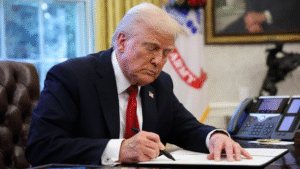Good News for Borrowers: U.S. Expands Student Debt Forgiveness
After years of uncertainty, millions of Americans are finally receiving long-awaited financial relief. In 2025, the U.S. Department of Education is expanding its student debt forgiveness initiatives, providing new hope to borrowers burdened by decades of payments and high interest rates.
This marks a major step forward in education reform and economic recovery, with new income-based plans, faster forgiveness timelines, and support for public service workers and low-income borrowers. It’s real progress — and it\’s already changing lives.
What’s New?
The latest student loan policy updates under the Biden administration include several big wins for borrowers:
- Automatic relief for borrowers who have been paying for 20–25 years under income-driven repayment (IDR) plans (Federal Student Aid)
- Expanded eligibility under the Public Service Loan Forgiveness (PSLF) program (PSLF Program Details)
- The enhanced SAVE Plan (Saving on A Valuable Education), reducing monthly payments to $0 for many low-income borrowers (White House Fact Sheet)
- Forgiveness for defrauded students and those who attended closed or misleading for-profit colleges (New York Times)
According to the Federal Student Aid Office, over 4 million borrowers could benefit from forgiveness or significant balance reductions in 2025.
Real Relief: Stories from Borrowers
For many, this isn\’t just a policy update — it’s life-changing.
“I got an email saying my $48,000 loan was forgiven. I thought it was a scam — but it was real. I cried. I finally feel free.”
– Jasmine R., Public School Teacher in Georgia
Stories like Jasmine’s are being echoed across the U.S., especially among public servants, nurses, and educators now qualifying under revised PSLF and IDR criteria.
Who Qualifies for Forgiveness in 2025?
Eligibility has expanded significantly this year. Borrowers may qualify if they:
- Made 240–300 monthly payments on federal income-driven repayment plans
- Worked 10+ years in public service fields under PSLF
- Earn less than $32,800 (individuals) or $67,500 (family of four) under the SAVE Plan
- Attended institutions that closed or misled students, such as ITT Tech or Corinthian Colleges
The Department of Education has confirmed that most adjustments will be made automatically without requiring additional applications for qualifying borrowers (StudentAid.gov).
The Bigger Picture: Student Loan Reform in Action
Since 2021, the Biden administration has approved over $143 billion in student loan relief through various targeted programs (White House).
Now, the administration is working to improve the student loan system by:
- Improving transparency and servicer communication
- Preventing punitive interest accumulation during hardship periods
- Expanding borrower protections for first-generation and low-income students
Additional reforms are in the pipeline, and Congress has introduced several bipartisan proposals aimed at improving long-term affordability and accountability in higher education.
Conclusion
The expansion of student debt forgiveness in 2025 is more than a policy shift — it’s a turning point for millions of Americans. Whether you’re a teacher, healthcare worker, or public servant, this year may be your opportunity to break free from the burden of long-standing student loans.
Visit StudentAid.gov to check your eligibility and track updates. Relief is no longer just a promise — it’s happening now.




Post Comment